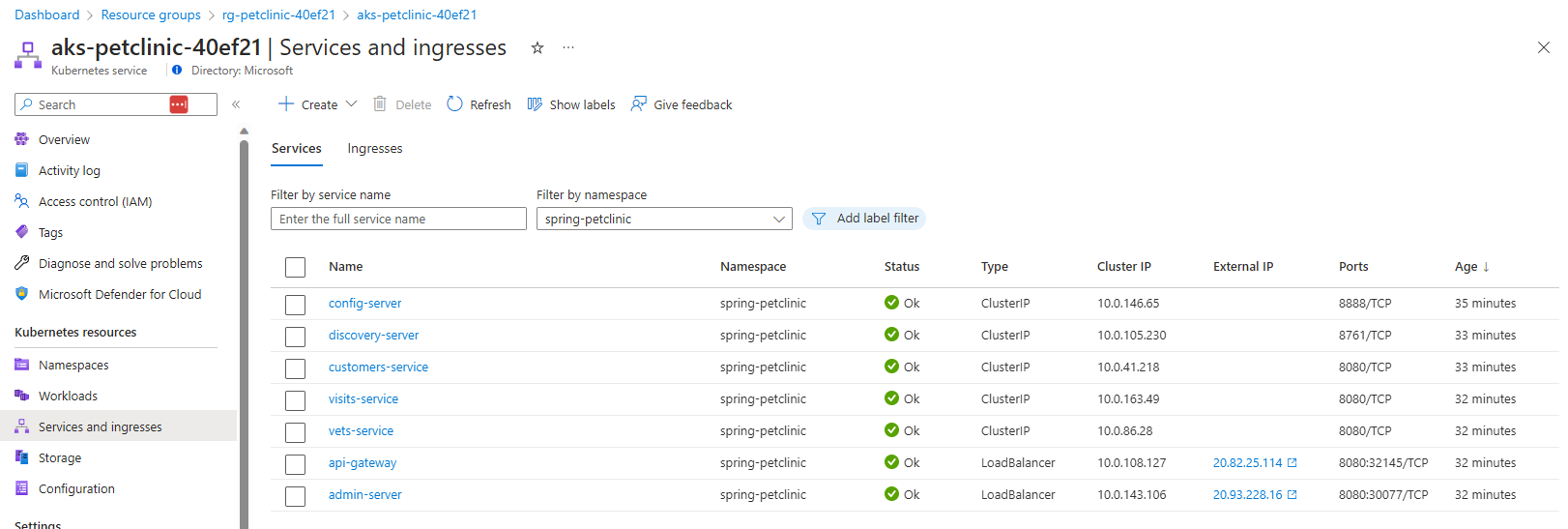Inspect your AKS service in the Azure Portal
By default the Azure Portal already gives you quite some info on the current status of the resources running in your AKS instance. In this first step of this lab, open the Azure Portal, navigate to your AKS instance and inspect what info you can find on the kubernetes resources running in the cluster. Find information on:
- The pods running in the
spring-petclinicnamespace. - The services and ingresses running in the
spring-petclinicnamespace. - The config maps in the
spring-petclinicnamespace. - The deployments in the
spring-petclinicnamespace. - The AKS node your
customers-serviceis running on. - The live logs of the
customers-service.
You can follow the below guidance to do so.
You will notice that a lot of the data you see here is the same info you can get by issuing kubectl get statements. What kubectl statements would you issue for getting the same info?
Step by step guidance
-
In your browser navigate to the Azure Portal, and to the resource group you deployed the AKS cluster to. Select the AKS cluster.
-
In the menu under
Kubernetes resources, selectWorkloads. Select thespring-petclinicnamespace. You will see all the deployments in this namespace.
-
Select the
Podstab and filter by thespring-petclinicnamespace here as well. You will now see all pods running in your AKS cluster in thespring-petclinicnamespace.
-
Select the
customers-servicepod to see its details. In the detail overview, you will see which node this pod is running on.
-
Select the
Eventsin the menu. The events for the pod will now be shown.
-
Navigate back to the AKS cluster and select
Services and ingressesfrom the menu. Select thespring-petclinicnamespace. This will show all the ClusterIP and LoadBalancer types you created.
-
Select
Configurationand filter by thespring-petclinicnamespace here as well. This will show you the config maps in this namespace.
-
When using
kubectlstatements, the equivalent statements for getting the same info as in the portal are:kubectl get pods -n spring-petclinic kubectl get services -n spring-petclinic kubectl get configmap -n spring-petclinic kubectl get deployments -n spring-petclinic kubectl describe pod <customers-service-pod-instance> -n spring-petclinic kubectl logs <customers-service-pod-instance> -n spring-petclinic